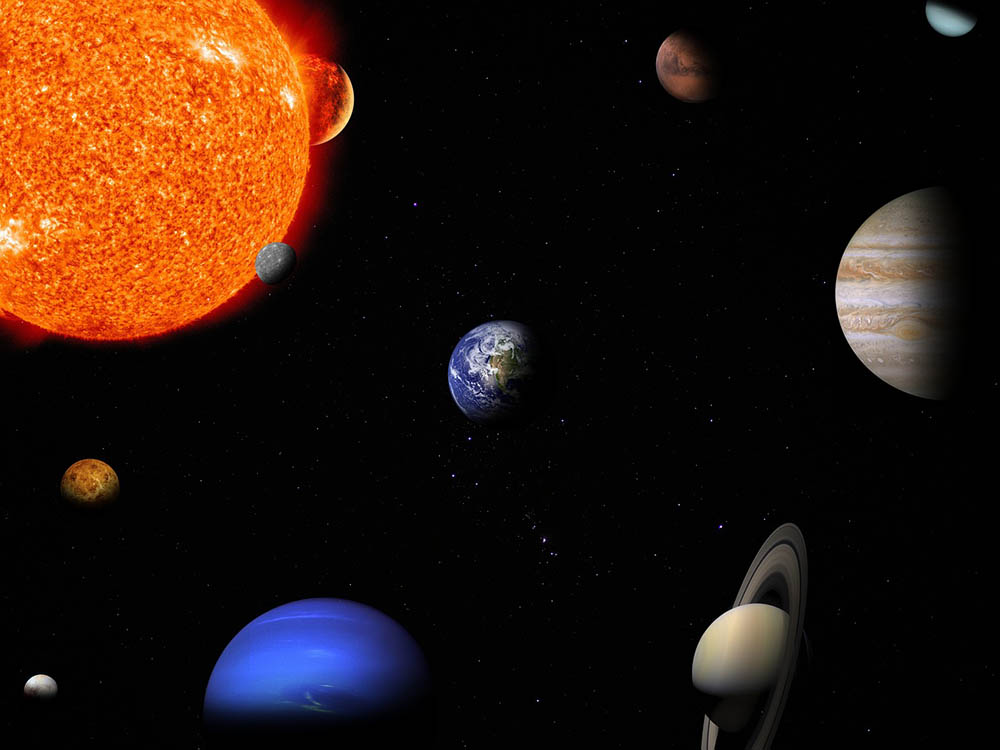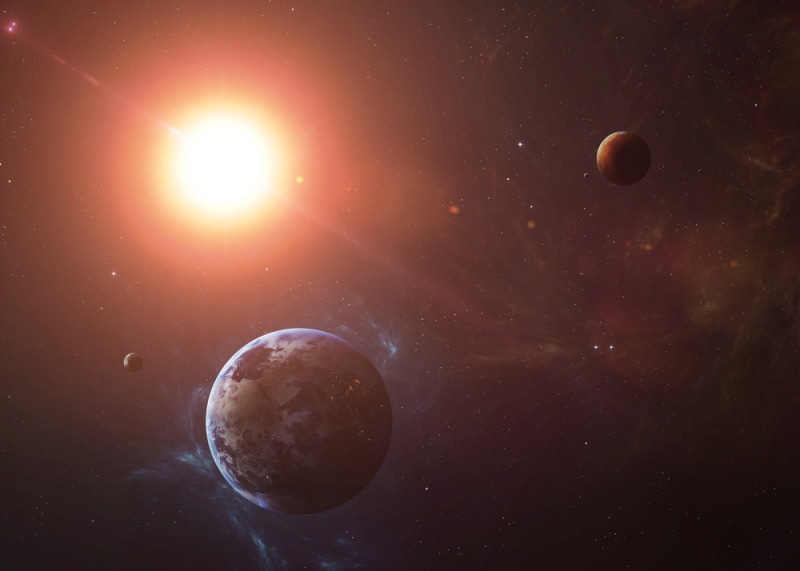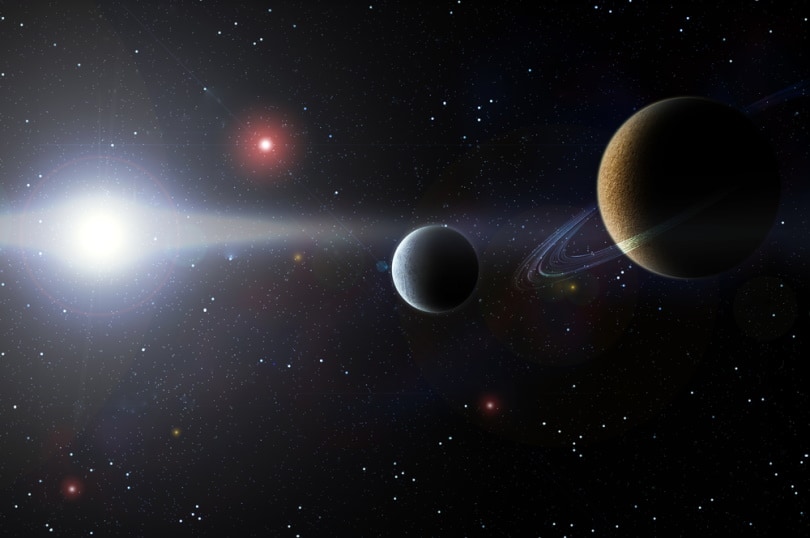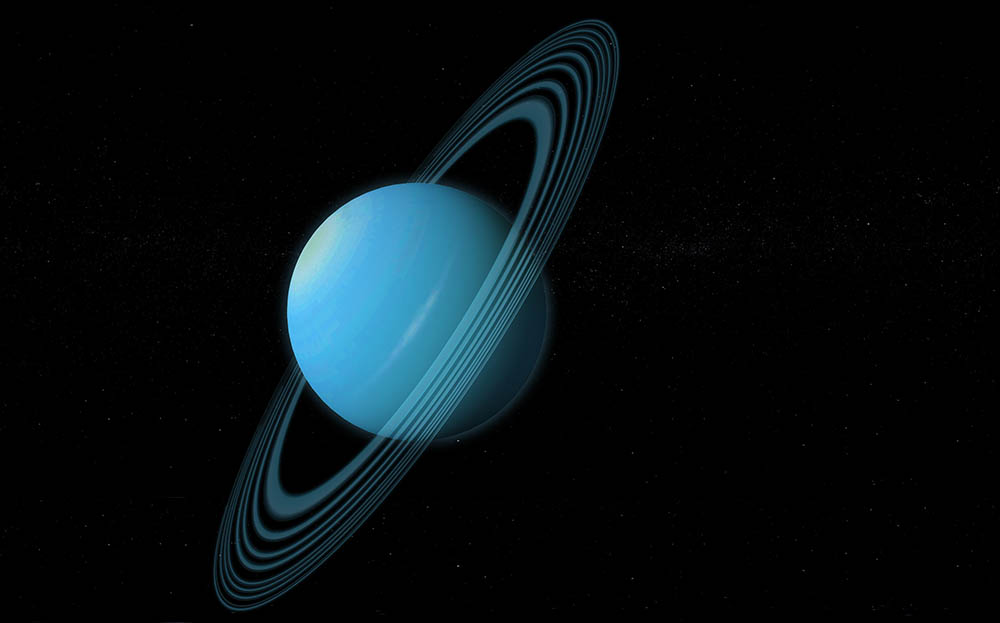10 Incredible Facts About the Solar System to Know in 2024!
Last Updated on

The solar system is a place that we call home; a cluster of planets, moons, and asteroids. There are so many things in our solar system that are still unknown, despite how close they may seem. We do know a lot about our tiny slice of the galaxy, though, and today we’ll be looking at some interesting things you may not know about our solar system.
Take a look below to see 10 incredible facts about the solar system!

The Top 10 Solar System Facts:
1. It Was Created Billions of Years Ago
Our solar system has been around for a very long time. According to NASA, this entanglement of space objects was formed nearly 4.5 billion years ago. It formed from gasses and space dust that pulled together due to gravity, building rocky or gaseous objects that eventually turned into our neighboring moons and planets. The Sun formed when hydrogen atoms mashed together through a gravitational pull, right in the center of it all. The remaining matter clumped into smaller chunks and debris, many of which ended up in the Asteroid Belt.

2. The Solar System Has Eight Planets
Although most of space is empty with a dark void, there are plenty of interesting subjects—especially planets. In our stretch of space, eight planets roam around our Sun. Here’s a list of those planets closest to farthest from the Sun; Mercury, Venus, Earth, Mars, Jupiter, Saturn, Uranus, and Neptune. Recently, Pluto has been removed from this list and is now considered a dwarf planet. We’ll go into more detail about this in a moment!
3. The Biggest Object in the Solar System Is the Sun
Our home star is a massive, gas-filled sphere that keeps the system alive. It’s made of hydrogen that fuses together, but that’s not the crazy part. The real kicker is that the Sun is so large that more than 1 million Earths could fit inside. It takes up 99.8% of the entire mass of our solar system, with the opposing 0.2% being the planets, moons, asteroids, and other matter. The Sun is really the center of attention!
4. There Are Five Dwarf Planets
We mentioned normal-sized planets earlier, but what’s a dwarf planet? A dwarf planet is exactly how it sounds; it’s a spherical object that doesn’t quite have the same massive size as something like Mars or Neptune. But they still orbit the Sun like normal planets do. Pluto was originally considered a planet, but it’s now a dwarf planet. The other four dwarf planets are Ceres, Haumea, Eris, and Makemake.

5. It Houses Approximately 200 Moons
In total, there are about 200 unique moons in the solar system. But, not all of them are the same. Some are quite large, while others are considered moons because they orbit an asteroid. We usually think of them as orbiting planets, in which case there can be dozens tied to just one planet, like Saturn or Jupiter. However, Earth only has one moon but it has a lot of importance to life and our oceans.
6. It Has the Only Life Known to Mankind
You might’ve seen this one coming, but the solar system is the birthplace of life as we know it. Planet Earth is the only known place in existence that has life; trees, bacteria, animals, and of course, us. This is because Earth is placed in what’s known as the ‘habitable zone’. It’s a place in all solar systems that has a perfect distance from a planet’s parent star, that enables water to be at just the right temperature. The only things that are needed otherwise are a hospitable climate, and lots of carbon to create organisms.
7. One of Its Planets Rotates Sideways
Of the eight planets in the solar system, there is one that stands out from the rest in a particularly unique way. Uranus, the 7th planet from the Sun, is a blue sphere of helium and hydrogen that was discovered back in 1781 by the famous William Herschel. It’s also the third largest planet here, but that’s not what makes it so interesting. Uranus has the special ability to rotate on its side, with its ring positioned at an angle. It’s theorized that this happened long ago due to a huge collision with another space object, possibly even a planet!

8. There Is a Disc of Asteroids in Orbit
Discovered at the beginning of the 19th century, the Asteroid Belt sits between Mars and Jupiter. The Asteroid Belt contains an abundance of rocky, metallic asteroids that range from the size of boulders to entire buildings. There is even a dwarf planet, Ceres, which is the largest object in the belt. Other large asteroids include Hygiea, Pallas, and Vesta. However, this rocky disc isn’t teeming with asteroids everywhere, as there is a lot of space in between each one. This makes it easy for spacecraft to navigate and collect data!
9. The Solar System Is Bigger Than You Think
You might think that the solar system extends just out to Pluto, but you’d be dead wrong. The entirety of this domain goes much further; it reaches a point where it would take 555 days just for light to reach the end. That’s more than a light year! We usually determine distance by using astronomical units, or AU. One AU is the equivalent distance from the Sun to Earth (93 million miles), but the length of the solar system is 1,921 AU. Talk about far out!
10. Jupiter is the Largest Planet
Jupiter is the 5th planet from the Sun, but its size is what makes it so magnificent. With over 50 moons orbiting it, Jupiter is about 88,900 miles in diameter. To put that into perspective, Earth is less than 8,000 miles in diameter—that’s 11 times smaller! You might’ve also heard about Jupiter’s Great Red Spot, a series of clouds that cover a large portion of its surface. The 5th planet is also one of the most luminous objects in the night sky due to its size.


Conclusion
The solar system is chock-full of fascinating features, but there’s still a lot of information we don’t know about our neighborhood. Scientists continue to study the fine details to see what our place will look like in the future; things are changing every day. It’s quite an enjoyable experience to learn about these though and we hope you got something out of these 10 incredible facts about the solar system!
Featured Image Credit: nymixArt, Pixabay
Table of Contents
- The Top 10 Solar System Facts:
- 1. It Was Created Billions of Years Ago
- 2. The Solar System Has Eight Planets
- 3. The Biggest Object in the Solar System Is the Sun
- 4. There Are Five Dwarf Planets
- 5. It Houses Approximately 200 Moons
- 6. It Has the Only Life Known to Mankind
- 7. One of Its Planets Rotates Sideways
- 8. There Is a Disc of Asteroids in Orbit
- 9. The Solar System Is Bigger Than You Think
- 10. Jupiter is the Largest Planet
- Conclusion
About the Author Robert Sparks
Robert’s obsession with all things optical started early in life, when his optician father would bring home prototypes for Robert to play with. Nowadays, Robert is dedicated to helping others find the right optics for their needs. His hobbies include astronomy, astrophysics, and model building. Originally from Newark, NJ, he resides in Santa Fe, New Mexico, where the nighttime skies are filled with glittering stars.
Related Articles:
15 Crucial Facts About Ultraviolet Rays & the Sun
What Constellation Is Spica In? The Interesting Answer!
10 Interesting Leo Constellation Facts, Myths, and FAQs
15 Interesting Pegasus Constellation Facts, Myths, and FAQs
6 Interesting Sagittarius Constellation Facts, Myths, and FAQs in 2024!
What Are Constellations? Where Did They Come From?
8 Interesting Libra Constellation Facts, Myths, and FAQs
What Is Infrared Radiation? Science-Based Facts & FAQ
